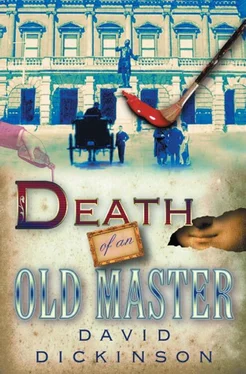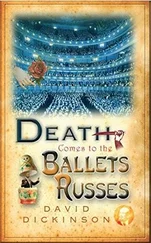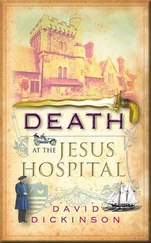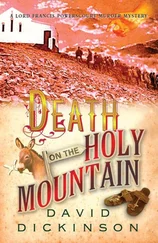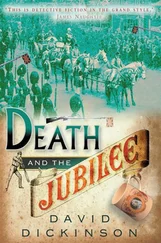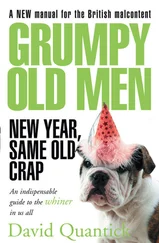David Dickinson - Death of an Old Master
Здесь есть возможность читать онлайн «David Dickinson - Death of an Old Master» весь текст электронной книги совершенно бесплатно (целиком полную версию без сокращений). В некоторых случаях можно слушать аудио, скачать через торрент в формате fb2 и присутствует краткое содержание. Жанр: Исторический детектив, на английском языке. Описание произведения, (предисловие) а так же отзывы посетителей доступны на портале библиотеки ЛибКат.
- Название:Death of an Old Master
- Автор:
- Жанр:
- Год:неизвестен
- ISBN:нет данных
- Рейтинг книги:4 / 5. Голосов: 1
-
Избранное:Добавить в избранное
- Отзывы:
-
Ваша оценка:
- 80
- 1
- 2
- 3
- 4
- 5
Death of an Old Master: краткое содержание, описание и аннотация
Предлагаем к чтению аннотацию, описание, краткое содержание или предисловие (зависит от того, что написал сам автор книги «Death of an Old Master»). Если вы не нашли необходимую информацию о книге — напишите в комментариях, мы постараемся отыскать её.
Death of an Old Master — читать онлайн бесплатно полную книгу (весь текст) целиком
Ниже представлен текст книги, разбитый по страницам. Система сохранения места последней прочитанной страницы, позволяет с удобством читать онлайн бесплатно книгу «Death of an Old Master», без необходимости каждый раз заново искать на чём Вы остановились. Поставьте закладку, и сможете в любой момент перейти на страницу, на которой закончили чтение.
Интервал:
Закладка:
He began the afternoon with Jason Lockhart, the young man from Clarke’s Gallery who had been going to found the new magazine with Christopher Montague. Pugh established that the main argument of the article was that a number of the paintings in the de Courcy and Piper Venetian exhibition were fakes, and that some were recent forgeries. And that news of the article was quite widely known in the little world of the art dealers and picture restorers of Old Bond Street.
Sir Rufus raised an objection, claiming the article was irrelevant. Pugh was quick on the rebuttal.
‘It is our contention, my lord, that it may have been this article and the message within it that led directly to Montague’s death.’ Sir Rufus was overruled.
Powerscourt looked briefly behind him. Two rows to the rear, clearly placed where the judge and jury could see him, Orlando Blane was fiddling nervously with his tie. Imogen had bought him a most respectable new suit for the occasion.
Edmund de Courcy was recalled to the witness box. Charles Augustus Pugh collected a large sheaf of papers and rose to his feet.
‘You are Edmund de Courcy, joint proprietor of the de Courcy and Piper Gallery in Old Bond Street?’
‘I am.’ De Courcy was wary, very wary. He had seen what Pugh had done to Johnston that morning.
‘You are also the owner of de Courcy Hall in the county of Norfolk?’
‘I am.’ De Courcy was staring at the empty easels.
‘Tell me, Mr de Courcy, I presume you were aware of the article Christopher Montague was writing at the time of his death, an article which was going to say that many if not most of the paintings in your exhibition were forgeries or fakes?’
‘I was.’
Powerscourt looked at the jury. They were concentrating hard. Over to his right Horace Aloysius Buckley stood very straight in the dock.
‘Perhaps you could tell the court what impact this article would have had if it appeared. I presume it would have been bad for business?’
‘I fear it would have been bad,’ de Courcy began.
‘Worse than bad perhaps?’ Pugh cut in very quickly. ‘A disaster? A catastrophe?’
‘It would have been very bad for business,’ was as far as de Courcy would go.
‘And do you regard it as significant, Mr de Courcy, that all of Montague’s papers were removed from his desk so that nobody, from that day to this, has seen the actual text of the article? Would that have been good for business?’
‘It certainly worked to our advantage,’ admitted de Courcy. He seemed to be relying on a policy of saying as little as possible. He still stared, as if hypnotized, at the easels.
‘Tell me, Mr de Courcy . . .’ Pugh was at his most emollient. Powerscourt suspected he was going to bring the forgeries into play very soon. ‘Were any of the paintings in your exhibition fakes or forgeries or copies? Take your time. Remember you are under oath, Mr de Courcy.’
It’s like a fork with a knight in chess, Powerscourt realized. If you saved your castle, you would lose your bishop. If you saved your bishop, you would lose your castle. You were impaled. If de Courcy said yes, he would destroy his own reputation. If he said no, then the easels might do it for him. Powerscourt suddenly realized how sharp it had been of Pugh not to place the paintings on the easels immediately but to hold them up, like a time bomb, waiting to explode under the de Courcy and Piper Gallery.
‘To the best of our knowledge,’ de Courcy began, ‘all the paintings were genuine.’
‘You are sure of that? Quite sure, Mr de Courcy?’ Charles Augustus Pugh looked directly into de Courcy’s eyes. The court had gone very quiet. Even the newspapermen had stopped the incessant scribbling in their shorthand.
‘I am,’ said de Courcy, blinking rapidly.
‘My lord,’ said Pugh, turning to the judge, ‘I propose to bring on Exhibit C.’
Two court officials hurried from the room. Exhibit A was on a little table in front of the jury It comprised a length of piano wire similar to the one used to garrotte Christopher Montague. The prosecution believed it was important for the jury to see an approximation of the murder weapon. Exhibit B sat beside it. This was the Trinity College, Cambridge tie found in Jenkins’ room on the Banbury Road in Oxford.
The porters brought in a painting about three feet high and two and a half feet wide. It sat in a gold frame. They placed it reverentially on the easel nearest to the witness box. A rather saturnine Venetian nobleman, almost four hundred years old, had come to inspect the Central Criminal Court. His body was almost at right angles to the artist, clad in a blue doublet, with a dark blue cloak thrown across his shoulders. Round his neck was a chain of very fine gold. He gazed imperturbably at the jury The jury stared back. The judge put on a different pair of glasses and inspected the latest visitor to his courtroom. Behind Powerscourt the crowd were rising, leaning forward to find a better view.
Pugh let the excitement die down before he spoke. ‘Do you recognize this painting?’ he said to Edmund de Courcy.
‘I do,’ replied de Courcy. ‘It is the Portrait of a Man , by Titian.’
‘And,’ Pugh went on, ‘it appears in the catalogue of your exhibition of Venetian paintings as Item Number 34.’ Pugh had pulled the catalogue out of his sheaf of papers and was helpfully showing it to the members of the jury.
‘Would you be so kind,’ Pugh turned to the court officials once more, ‘as to bring in Exhibit D?’
There was an outbreak of whispering among the crowd. What was coming next? What rabbit was Charles Augustus Pugh about to bring forth now? The judge stared at them and raised his gavel. The whispering stopped.
Another painting about three feet high and two and a half feet wide, set in a gold frame, was placed on the next easel. The same Venetian, in the same doublet with the same cloak and the same chain around his neck stared out at the jury He had achieved the alchemists’ dream over the centuries, he had reproduced himself perfectly.
Edmund de Courcy went pale. Orlando Blane smiled quietly to himself. The public gallery made so much noise that the judge banged his gavel very loudly on his great desk.
‘Silence in court! Silence, I pray you! Any more of these unseemly interruptions and I shall clear the court! Mr Pugh!’
‘Do you recognize this painting?’ he said to de Courcy.
‘I do,’ came the answer. ‘It is the Portrait of a Man , by Titian.’
‘And which of the two paintings,’ said Pugh in a very firm voice, ‘is the real one?’
De Courcy looked at them both very carefully. He looked at Pugh as if pleading for mercy. Not quite the Judgement of Solomon, thought Powerscourt, staring at the drama unfolding in front of him, but a terrible question all the same. He wondered if Orlando Blane knew the answer. He wondered if Pugh knew the answer, some private mark on the frame perhaps which would remind him of the difference between the true and the fake.
It was obvious that Edmund de Courcy did not know the answer. He stared at the two easels like a schoolboy looking at an exam paper for which he has done no preparation at all.
‘I would not wish to hurry you, Mr de Courcy,’ said Pugh, sounding faintly exasperated with his witness, ‘but I repeat my question. Which is the real one?’
Still de Courcy did not speak. The two Venetian gentlemen were still inspecting the jury.
‘The one on the left,’ de Courcy whispered.
‘I’m not sure that the jury would have heard you, Mr de Courcy. Could you speak up for the court?’ said Pugh.
‘The one on the left,’ de Courcy replied in a louder voice. Fifty-fifty chance he’s right, Powerscourt said to himself.
Читать дальшеИнтервал:
Закладка:
Похожие книги на «Death of an Old Master»
Представляем Вашему вниманию похожие книги на «Death of an Old Master» списком для выбора. Мы отобрали схожую по названию и смыслу литературу в надежде предоставить читателям больше вариантов отыскать новые, интересные, ещё непрочитанные произведения.
Обсуждение, отзывы о книге «Death of an Old Master» и просто собственные мнения читателей. Оставьте ваши комментарии, напишите, что Вы думаете о произведении, его смысле или главных героях. Укажите что конкретно понравилось, а что нет, и почему Вы так считаете.
